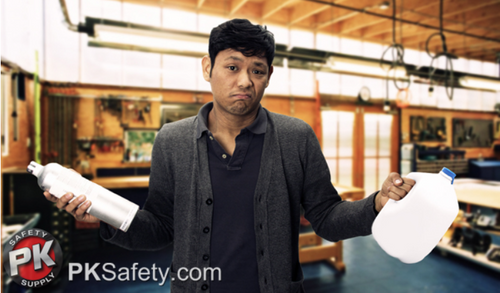How Do I Know if My Calibration Gas is OK to Use?
There are about 20 good reasons you need to make sure you have current calibration gas for use when calibrating and bump testing your gas monitor. But for the purposes of this post, we'll stick to the top two or three.
Knowing the expiration of your calibration gas supply is more important than checking that gallon of milk that has been in your refrigerator for the past couple of weeks. Milk has more ways of letting you know it is no longer fit for breakfast. While milk might go sour or come out in chunks to warn you of its unsuitability for consumption, except for the expiration date on the outside of the cylinder, calibration gas has no telltale signs.
Hydrogen sulfide, ammonia, chlorine and other reactive gases can deteriorate over a relatively short period of time. The term reactive gas broadly defines chemicals that may have some instability when mixed with certain materials, such as the canister itself, or moisture, oxygen, or other chemicals. After the shelf life has expired, it's likely the gas itself will have decreased in concentration or dropped out completely, and no gas monitor should be calibrated with gas of unknown concentration.
Calibration gas from any reputable gas company will be clearly marked with "Expiration Date" or "Best Used By". Because gas cylinders under pressure are considered hazardous materials, HazMat fees and special shipping are often part of the program. If you see your gas is set to expire, re-order early to compensate for the delays in shipping that will result from the HazMat classification.
To the agencies that regulate confined space entry programs, including insurance companies, if you don't have documented or certified current gas that can be checked and verified in the event of an accident, you may as well not have bothered calibrating at all. It is critical that gas comes from a traceable source.
It goes without saying that all bump testing and calibration events (along with alarms, etc.) must be documented and recoverable. It's not going to do you or your company any good to assume your data-logging is taking care of itself, but then be unable to turn up the verification when it counts. This may be a post about the merits of keeping track of your gas supply documentation as much as it is about having fresh calibration gas. It is important that you have both current gas and the ability to document your processes in order to protect both the workers from hazardous atmospheres and the company from litigation.
Recent Posts
-
Why Hi-Vis Winter Work Gear is Essential for Safety During the Cold Months | PK Safety
When temperatures drop and daylight hours shrink, outdoor workers face additional hazards that incre …Oct 31st 2024 -
Self Braking Descender: Advanced Rope Control for Fall Protection | PK Safety
For professionals working at heights, controlled descent is critical. Whether you’re a window cle …Oct 30th 2024 -
Hand and Eye PPE Machinists Rely On | PK Safety
Machining environments are inherently dangerous, with workers often surrounded by heavy machinery …Oct 27th 2024





